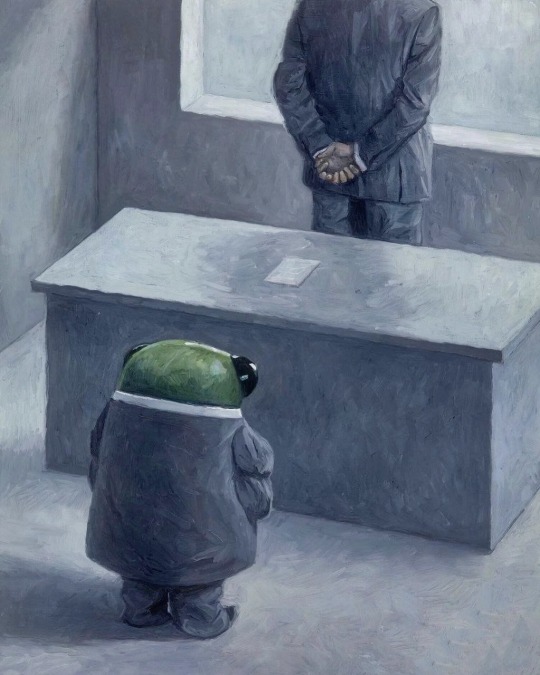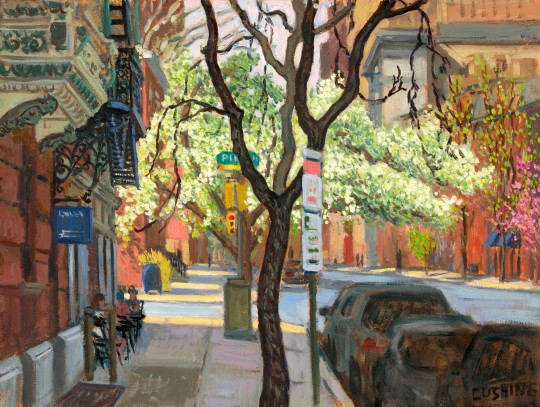Text
where is the article about the guy who breaks up traffic jams as a hobby. bad googling only gets me the guy who faked a traffic jam with 99 phones in a wagon
5K notes
·
View notes
Text










ARMITAGE: We can beat the thaw and get across the ice back to the ships, Solomon. We can make it— TOZER: We’ll do what we have to do, Tommy. But we’ll do it tomorrow.
-> 27/∞ CHARACTER DYNAMICS in THE TERROR — for anon
159 notes
·
View notes
Text

29K notes
·
View notes
Text


prev it was a great time to be 8 years old. I think all three seasons are on tubi (free) right now
in 2005 we had lost for children (flight 29 down on discovery kids) but we also had lost and so it was a wonderful year in television
11 notes
·
View notes
Text











This captures something I don't think I'll ever be able to put in to words.
Oh how I love shaun tan.
26K notes
·
View notes
Text

The Reluctant Victor, inspired by The Reluctant Bride by Auguste Toulmouche - I just thought that this painting was SO perfect for Katniss and I had to draw it!
16K notes
·
View notes
Text
wait........ being a loser woman is the best thing ever ........ #blessed
4K notes
·
View notes
Photo

Charles Cushing, Pear Tree at 13th and Pine Streets, Philadelphia, 2023, Oil on canvas
5K notes
·
View notes
Text

wish they didn’t serve this much. makes me feel ill
4K notes
·
View notes
Text
in 2005 we had lost for children (flight 29 down on discovery kids) but we also had lost and so it was a wonderful year in television
11 notes
·
View notes
Text
Something I’ve noticed is that leftist movements tend to turn practical, thought out tactics that were part of a larger plan for liberation, and remove them from their context. Then we often use these tactics as symbolic ways to mark our distaste for empire and harken back to older movements. However, these tactics are often already accounted for by the system, and sometimes are actively encouraged as ways to harm our people and defang our processes.
Here is an example;
In the Civil Rights struggle, getting arrested en mass was seen as an important part of the process of freedom. The civil rights leaders realized that the areas they were in did not have large enough jails to confine them all, and that if they filled the jails up, the police simply could not confine everyone else in the movement. Getting arrested in coordinated ways was a noble and helpful sacrifice that kept your brothers and sisters from getting arrested. Due to less strict sentencing at the time, and the ability of the movement to scare the police into releasing people, getting arrested often wasn’t the utterly disabling and free-life ending process it is today. (That’s not to say getting arrested was easy on people; the police brutality of the time was incredibly intense.)
Those who spent time in jail were given almost a reverent status. That had gone through much suffering to keep others from the same fate. Often, their ability to taking confinement completely off the table for the rest of the activists is precisely what allowed for certain other actions to be successful. Paying for legal defense and moderate bail costs was something of a drain on the movements scant, resources but it could often be worth it due to the role arrests played.
However, the state responded to this, and turned it to their benefit. The next fifty years saw a prison boom. Now, economically deprived small towns were made to bid and beg for prisons to be built in there areas; not only to lock people up, but also because working at the prison was presented as one of the only jobs left in rural America. Additionally, thisdrove the labor minded population to be further in conflict with other movements in some areas.
As the capacity of the government to capture and confine increased, the capacity of the movement to fill up the jails and prevent further arrests did not. Now, the system was hungry for more and more bodies for its endless rooms. It further instilled and mechanized the capacity of prisons to force labor, undercutting labor movements. Sentences became longer, parole became stricter, fines and restitutions increased to exorbitant amounts. Those who went in for petty arrests often never came out.
But, the feeling that getting arrested was a noble and venerable goal did not leave the movement. Some transitioned tactics; instead of filling up the jails to allow others to act without recourse, they sought to get arrested in test cases, as they had seen work occasionally before. But this too became more and more difficult, as the legal system realized it did not have to play by its own rules. Slowly but surely, the legal mythology that because it is written and because it is fair, it will be ruled so, began to overtake the minds of activists; even as they failed time and time again to win this way, they still threw countless of their friends into the mouth of the enemy, and condemned them to life in prison.
Even this had become a shadow of itself by the 2000s and 2010s. Arrest became an aesthetic goal instead of a practical one. The most radical in the movements were culturally encouraged to throw their lives away for petty protests that none would see, and would have no material impact on the operations of the system of dominion. The reality that getting kettled at a non violent protest could land you with the same jail time as a political assassination did not dawn upon these activists until long after hey were already in jail, and already disconnected from the movement. Their friends would gather all their meager savings towards bail funds, oftentimes going into debt, or otherwise extracting money from the rest of the marginalized communities supportive of the activism. Those funds would then go to the government in the form of bail, and then right back towards operating the same policing systems that targeted them. In this way, the main economic output of the leftists movement of the time was to fund the very systems of policing that they sought to destroy; and to get themselves and each other locked in cages in the process. Instead of developing practical systems of change, radicals were taught to emulate key aspects of the tactics of prior generations that had specifically been recuperated into the goals of the state.
Those who saw the futility in this were readily pushed towards the defanged and self acknowledged pointless marches of the nonviolent liberal movement, which never had any goal other than to once again emulate the visual aesthetics and personal emotional fulfillment of past movements.
We see this pattern play out all the time. People insisting on the radical importance of a leftist print newspaper in a time when print journalism is dead. A fetishization of industrial unionism in a town where no factory has been for three generations. Arguments over whether to support long defunct governments and long dead leaders for some tactical benefit which will never arise from reality.
It is long past time for us to realize that the process of achieving human liberation does not come from symbolic actions, nor from following the playbook of past movements. We must learn our history, yes, but not to emulate it; instead we must learn it to understand its failures and its successes, and, most importantly, how our movement ancestors interacted with the material conditions of their time to create multifaceted plans that met the needs of their people and made successful guerrilla war upon dominion.
We need to imagine ways of making change that are suited to the times that we are living in, the problems we face, and the opportunities that we have. This utterly necessitates that we get deeply embedded into the places and communities around us, that we listen with open ears to the problems our people are facing, and that we fold those ever more towards opportunities of liberation and care for one another.
3K notes
·
View notes
Text
Have you ever seen the Bornean bearded pig (Sus barbatus)? This bewhiskered swine inhabits rainforests and mangroves in parts of Southeast Asia, where it uses its long snout to dig up snacks like earthworms and roots. It’s often found in small groups, but sometimes gathers for mass migrations—during which more than a hundred bearded pigs can be spotted crossing rivers in search of fruit. This critter has the leanest torso and longest head of all living pigs.
Photo: Nick Volpe, CC BY-NC 4.0, iNaturalist

3K notes
·
View notes
Text
haymitch being like okay i guess i'll play up the rascal bit. yeah i'm one sly dog. haha okay so they think i'm funny. well hey i am a little bit of trouble ain't i. i'm on a roll baby. he keeps getting egged on and whipped up and then this

a glass cube of live bees on his head bitch i laughed so hard
22 notes
·
View notes
Text
the difference between Haymitch and Katniss's narration is so funny. Haymitch would give us everyone's social security number if he knew them, while Katniss wouldn't even tell us her mom's name.
#god he's so fucking funny and i'm saddened to know what he was like before#i'm not done. but everything i keep reading makes me dread what still has to happen for relationships & people to turn out the way they do#thg#sotr
8K notes
·
View notes


